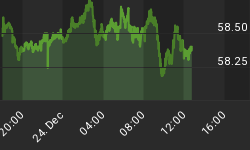In the late 1970s, buying a house was a "no-brainer," inasmuch as the annual rate of price appreciation on single-family existing homes exceeded the mortgage rate, or cost of financing the home. Because homes, unlike most dot.com stocks of the late 1990s, actually pay a dividend - shelter services - it was a win-win situation for the home buyer back in the late 1970s. He or she could finance an asset at an annual interest rate below the rate of price appreciation of that asset and could earn an implicit dividend on it if he or she chose to live in the house or an explicit dividend if the house were rented out. And the frosting on the cake for owner-occupied housing was the tax advantages. The guaranteed profitable carry trade in housing ended in the 1980s as mortgage rates generally were above the annual rate of price appreciation of houses. But the guaranteed profitable carry trade in housing returned in the early 2000s as once again mortgage rates fell below annual rates of house-price appreciation. Former Fed Chairman Greenspan says that you can thank the fall in the Berlin Wall in November 1989 for the return of the easy-money carry trade in housing. But I think the former chairman is once again too modest. Rather, it looks to me as though his easy money policy of the early 2000s was largely responsible for the easy money to be made in housing in the same period. But the guaranteed profitable carry trade in housing is now over as can be seen in Chart 1.
Plotted in Chart 1 are the year-over-year percent change in the median price of a single-family existing home and a "synthetic" 30-year fixed mortgage rate. The synthetic mortgage rate is the yield on the Treasury 10-year security plus 157 basis points, which is the median spread of the 30-year fixed mortgage rate over the Treasury 10-year rate for the period April 1971 through October 2006. (The reason I calculated a synthetic mortgage rate was to address the lack of mortgage rate data prior to April 1971.) Starting in August of this year, the year-over-year percent change in the median house price went negative and plumbed a record rate of depreciation in October at minus 3.45%. Even borrowing in yen where 10-year government bond yields are less than 2% will not now guarantee one a profitable carry trade in U.S. housing.
Chart 1
Perhaps house prices will rebound. Perhaps, but the current supply-demand situation suggests otherwise. As Chart 2 shows, there still is a yawning gap between changes in total single-family homes sold and changes in homes for sale. The change in homes sold in October minus the change in homes for sale was minus 41%. Although this is an improvement from the July low gap reading of minus 53%, the October negative gap still is wider than any prior to this housing recession. So, supply continues to outpace demand by a wide margin, which suggests further declines in single-family home prices and continued negative carry in housing.
Chart 2
Former Fed Chairman Greenspan has recently commented to the effect that the worst of the housing recession is behind us. History is not on the side of this view. Chart 3 shows the peak-to-trough percentage declines in the GDP line item, real residential investment. In the prior nine housing cycles, the average peak-to-trough decline is 24.6%; the median is 22.6%. The peak-to-trough decline to date in the current housing recession is 7.9%. Unless this turns out to be a more moderate than usual housing recession, unlikely given the amount of speculation and leverage involved in the boom, then we have "miles to go" before we can put this housing recession "to sleep." Thus, don't look for the carry trade in housing to turn profitable any time soon.
Chart 3
*Paul Kasriel is the recipient of the 2006 Lawrence R. Klein Award for Blue Chip Forecasting Accuracy
















